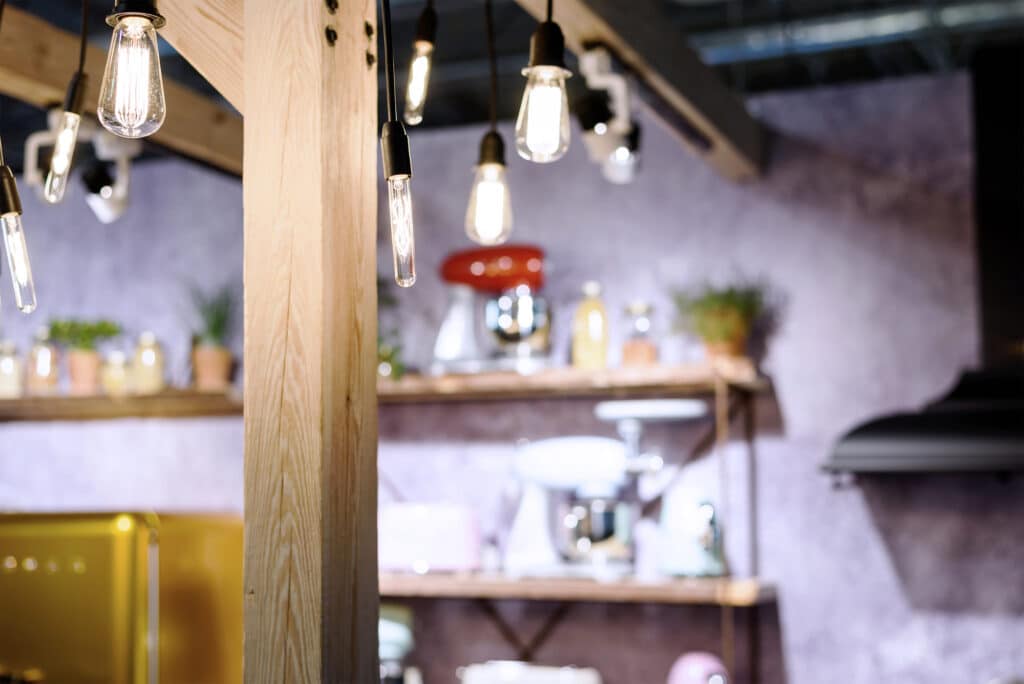
Choosing the right lighting for your kitchen is vital to creating a functional and inviting space. Lighting not only affects the overall ambiance of the room but also impacts your mood, productivity, and ability to perform tasks efficiently. One crucial aspect to consider when selecting kitchen light bulbs is the color temperature. Color temperature refers to the appearance of light emitted by a bulb, ranging from warm to cool tones. In this article, we will explore the different color temperatures available and discuss the best options for your kitchen.
Understanding Color Temperature:
Before diving into the best light bulb colors for the kitchen, it’s important to understand how color temperature is measured. The unit used to measure color temperature is Kelvin (K). A lower Kelvin number represents warm light (yellowish tones), while a higher Kelvin number indicates cool light (bluish tones).
Warm Light Bulbs (2700K to 3000K):
Warm light bulbs have a Kelvin range between 2700K to 3000K, mimicking the soft glow emitted by traditional incandescent bulbs. They create an inviting and cozy atmosphere, perfect for areas where comfort is essential, such as living rooms or bedrooms. However, warm light bulbs are not always the best choice for kitchen lighting. They can give the room a dull or mellow ambiance, making it difficult to perform tasks that require precise visibility.
Cool Light Bulbs (3500K to 4100K):
Cool light bulbs have a Kelvin range between 3500K to 4100K, offering a bright and natural lighting experience. They are often used in commercial spaces, offices, and areas where tasks that require attention to detail are performed. Cool light bulbs provide optimal visibility, making them suitable for task-oriented activities like chopping vegetables, reading recipes, or working on kitchen projects. However, cool light can be quite stark and lacks warmth, which may contribute to a slightly clinical feel in a kitchen.
Neutral Light Bulbs (4000K to 5000K):
Neutral light bulbs have a Kelvin range between 4000K to 5000K, striking a balance between warm and cool tones. They provide a clean, natural light that closely resembles daylight. Neutral light bulbs are versatile and can be used in various living spaces, including kitchens. They are ideal for showcasing the true colors of food and enhancing the appearance of ingredients and meals. Additionally, these light bulbs reduce eye strain and improve visibility, making them great for cooking, cleaning, and multitasking in the kitchen.
Best Light Bulb Options for the Kitchen:
Now that we have a better understanding of color temperatures and their effects let’s consider some of the best light bulb options for your kitchen:
1. LED Lights:
LED (Light Emitting Diode) lights are the most energy-efficient and long-lasting light bulbs available in the market. They consume significantly less power than traditional incandescent or fluorescent bulbs, making them a sustainable choice for your kitchen. LEDs come in a range of color temperatures, including warm, cool, and neutral. Opt for LED bulbs with a color temperature of 4000K to 5000K for a natural and well-balanced lighting solution in your kitchen.
2. Daylight Bulbs:
Daylight bulbs are designed to mimic natural daylight and are commonly used in photography studios. These bulbs have a color temperature of around 5000K to 6500K, providing a bright and crisp light output. While daylight bulbs may seem overly bright for home use, they can be suitable for specific kitchen areas, like over the sink or countertops where detailed tasks are performed. However, it’s best to balance the cooler light with warmer tones in other areas of the kitchen to create a cohesive atmosphere.
3. Halogen Lights:
Halogen bulbs emit a warm, white light similar to traditional incandescent bulbs but are more efficient. They have a color temperature ranging from 2800K to 3200K, making them ideal for general kitchen lighting. Halogen lights offer excellent color rendering, allowing you to see the true colors of your food and ingredients. However, it is important to note that halogen bulbs can become extremely hot, posing a potential burn risk. Ensure they are used in fixtures that provide proper ventilation and protection.
4. Compact Fluorescent Lights (CFLs):
CFLs have been a popular choice for energy-efficient lighting in homes, offices, and commercial spaces. With a variety of color temperature choices, ranging from warm to cool, CFLs can be suitable for different areas of the kitchen. However, compared to LEDs, CFLs have a slower warm-up time and can contain trace amounts of mercury, making proper disposal crucial. CFLs are gradually being phased out as more efficient and environmentally friendly options, like LED lights, become widely available.
5. Dimmable Bulbs:
If you desire flexibility in your kitchen lighting, consider installing dimmable bulbs. Dimming allows you to adjust the brightness and color intensity, providing control over the ambiance and functionality of the room. Dimmable LED bulbs are an excellent choice as they are energy-efficient, have a long lifespan, and offer various color temperatures to suit your needs. Implementing a dimmer switch will allow you to create a tailored lighting experience that caters to different activities in the kitchen.
Additional Tips for Kitchen Lighting:
Apart from selecting the right light bulb color temperature, here are some additional tips to enhance your kitchen lighting:
1. Layer Your Lighting:
A combination of ambient, task, and accent lighting creates a well-balanced and visually appealing kitchen. Ambient lighting provides overall illumination, task lighting focuses on specific work areas, and accent lighting highlights architectural features or decorative elements. Layering light sources can transform your kitchen into a versatile space suitable for various activities and moods.
2. Under Cabinet Lighting:
Installing under cabinet lighting is an effective way to brighten up your countertops, providing direct task lighting for food preparation. LED strip lights are a popular choice for under cabinet lighting, as they are energy-efficient, discreet, and produce minimal heat.
3. Consider Natural Light:
If your kitchen has windows or skylights, take advantage of natural light sources during the day. Natural light saves energy, improves your well-being, and enhances the appearance of your kitchen.
4. Balance Cool and Warm Tones:
To create a harmonious atmosphere, balance the cool tones of task lighting with warmer accent lighting. Introducing warm tones through decorative pendant lights, wall scones, or chandeliers adds a touch of coziness and character to your kitchen.
5. Always Test Bulbs Before Committing:
When considering a particular light bulb color temperature, it’s essential to test it out in your kitchen before investing in multiple bulbs. Lighting can vary depending on your kitchen’s size, layout, and color scheme. By trying out different bulbs, you can ensure the desired lighting effect and make an informed decision.
Selecting the right light bulb color temperature for your kitchen is crucial in creating a functional and inviting space. Consider the tasks performed, the overall ambiance desired, and the specific needs of your kitchen when making your decision. LED lights with a neutral color temperature of around 4000K to 5000K are an ideal choice, ensuring optimal visibility and color rendering without sacrificing comfort. Remember to layer your lighting, consider natural light sources, and test different bulbs before committing to achieve the perfect lighting balance in your kitchen.
